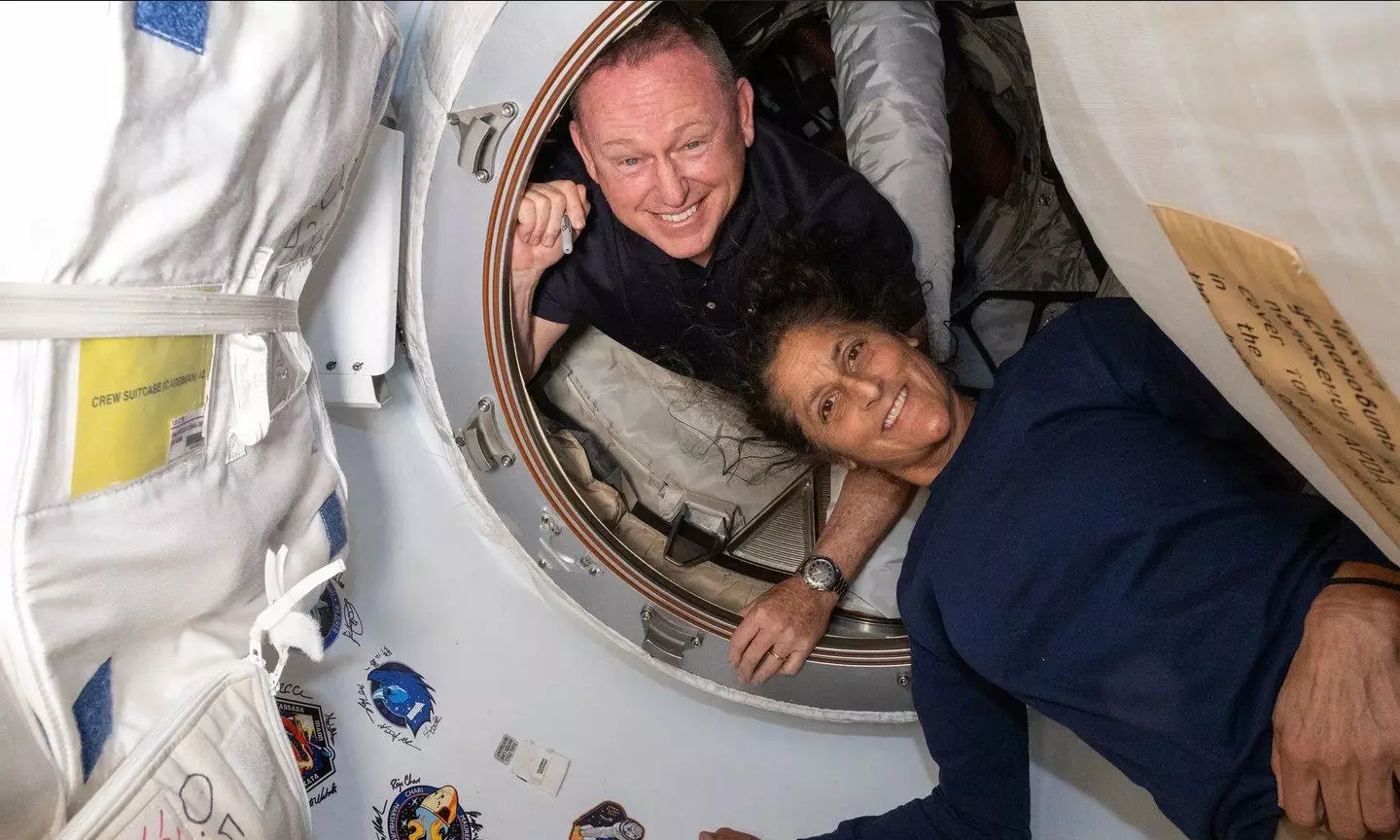
- Home
- India
- World
- Premium
- THE FEDERAL SPECIAL
- Analysis
- States
- Perspective
- Videos
- Sports
- Education
- Entertainment
- Elections
- Features
- Health
- Business
- Series
- In memoriam: Sheikh Mujibur Rahman
- Bishnoi's Men
- NEET TANGLE
- Economy Series
- Earth Day
- Kashmir’s Frozen Turbulence
- India@75
- The legend of Ramjanmabhoomi
- Liberalisation@30
- How to tame a dragon
- Celebrating biodiversity
- Farm Matters
- 50 days of solitude
- Bringing Migrants Home
- Budget 2020
- Jharkhand Votes
- The Federal Investigates
- The Federal Impact
- Vanishing Sand
- Gandhi @ 150
- Andhra Today
- Field report
- Operation Gulmarg
- Pandemic @1 Mn in India
- The Federal Year-End
- The Zero Year
- Science
- Brand studio
- Newsletter
- Elections 2024
- Events
- Home
- IndiaIndia
- World
- Analysis
- StatesStates
- PerspectivePerspective
- VideosVideos
- Sports
- Education
- Entertainment
- ElectionsElections
- Features
- Health
- BusinessBusiness
- Premium
- Loading...
Premium - Events

Space capitalism – be it Elon Musk's SpaceX or Boeing’s Starliner – is not spacefaring; it just fuels MNCs' dreams of using space tech to hunt for profits
Amid concerns sparked by astronaut Sunita Williams losing her bone density inside a locked Starliner spacecraft docked at the International Space Station (ISS), there is an ambiguous statement from NASA that doesn't tell us when she will be brought back.
The mission went bunk and five out of 28 thrusters failed, with helium leakage in five different places and a not-so-successful firing of reaction control system.
Hopes of brining back Williams and her colleague Butch Wilmore are getting increasingly bleaker.
Boeing's cost-cutting
The prime reason is Boeing’s calculation of its loss at $1.5 billion if it has to abandon Starliner in the orbit to organise a rescue mission of astronauts in another dragon capsule, from Elon Musk's SpaceX.
It is now known that Boeing neglected the safety aspects of its space vehicles by firing many of its safety and control officials over the past 12 months to trim operational costs.
Space capitalism – be it in the form of Elon Musk’s SpaceX or Boeing’s sulking Starliner – is not spacefaring.
Space capitalism
It's but a new way to invest in speculative market forces by taking a flight to Infinite Space.
It's literally playing with dark energy and relentless black-hole explosions. The attempt is to extract energy resources and acquire military and technological power in space.
Such missions offer an extraordinary opportunity to shop in new frontiers for resources and technology. It engages a certain superman-like overcoming of the ordinary human’s limited capacity to move only on Earth, and fuels multinational companies' (MNCs) dreams of using space technologies to hunt for profits.
Stock market stimulus
How space technology became the latest frontier of stock market stimuli could be seen in rise and fall of Boeing stocks in relation to Elon Musk’s apparently more successful space missions.
While Boeing’s shares have fallen nearly 6-10 per cent since June, when Starliner’s glitches became known, SpaceX shares are rated very high. (SpaceX is yet to enter the stock market through an initial public offering, or IPO. It makes tender offers that enable company insiders or employees to sell their shares though the company is not listed.)
The longer Williams and Wilmore are locked inside Starliner, the steeper would be Boeing's losses. Public opinion and market are responding in a negative way to Starliner’s glitches and Boeing’s abject failure to decide when to rescue the astronauts from the botched mission.
Recalling Kalpana Chawla
It would be no less harrowing to see how an alternative plan to bring back the two astronauts pans out, given that Boeing has time only till August 18 to remove Starliner.
The next mission of NASA is supposed to land on August 18 in the dock of ISS, before which Starliner has to be removed.
Boeing’s calculation of the potential loss, the stakes involved in saving the astronaut duo's lives, and the entry of Musk as the rescuer changes the whole plot for earthlings. The seeming winner is Musk in this odd script of possible white knight for hapless astronauts.
It's over two decades now, but seemingly nothing has changed since Kalpana Chawla’s Columbus busted during its return to the Earth’s orbit in 2003.
A leaking Starliner in all likelihood may end up the same way unless it is abandoned and the two humans inside are rescued without any further delay.
Safety overlooked
The earthly considerations of profit and loss face a tough territory in the vast neutrino-filled Infinite Space of dark matter and dark energy. Such a space can be won over only if human lives are not subjected to the vagaries of dubious profiteering.
Boeing, in spite of many pointers, failed to upgrade its safety procedures. The future of its ex-safety mangers like Ed Clark is endangered, as widely reported in the media, after whistleblowers revealed the inside stories of business brinkmanship in Boeing.
The company cannot risk the lives of Williams and Wilmore with impunity even if they are ultimately rescued by a third party in the larger interest of space safety.
Did Boeing do it right?
Can Boeing deny its accountability for the failure of thrusters and leakage of helium resulting in the deterioration of the health of the astronauts inside the auto-locked vehicle?
Did Boeing follow prescribed modules of safety and rescue operations without any waste of time when such glitches started appearing?
Maybe technical glitches are not predictable, but safety modules for rescue cannot have the same uncertainty.
NASA's priority
Space technology has grown enough in recent times for organisations to have contingency plans in place before an operation is launched with humans. The gloomy picture of Kalpana Chawla’s lifeless return continues to haunt us, but safety procedures since then have become a big priority for NASA.
With the entry of private corporates in the space sector, it appears that capitalism’s entry into the competitive space economy wants to turn explorations into expropriations.
However, the lives of astronauts should not be pushed to the edge.
Money over human lives?
We may recall how China seemingly got hold of helium-3 by mining the lunar surface, while the US and European nations are still speculating on various projects to extract the isotope.
Stiff competition to gain a niche in the space sector by flaunting shiny new missions keeps risk and safety issues under wraps, far away from public scrutiny. This dark side of space capitalism is now coming to light, as there is no firm date and plan of rescue yet for Williams and Wilmore. The dilemma between saving lives and losing money is fully visible.
Intellectuals may support the technological singularity of space missions – such as US computer scientist Ray Kuzweil’s whole idea that technology can overcome the limits of life bound by physical processes. But this falls flat as reports come in of the stranded astronauts losing bone density due to microgravity.
That by 2045, singularity shall arrive and non-sentient robots shall help humans overcome limits such as life and intelligence is hardly going to materialise, considering the human race is still to overcome its fated earthiness.
Capital and space
That way, Greek economist and politician Yanis Varoufakis’s work on techno-feudalism showed how capitalism’s mutation into cloud capitalism made it possible not to think of the actual limits of technological explorations.(The Federal seeks to present views and opinions from all sides of the spectrum. The information, ideas or opinions in the article are of the author and do not necessarily reflect the views of The Federal.)


